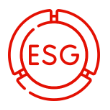Double Materiality Assessment
Identify and evaluate your organization’s most significant impacts on people and the environment, as well as ESG risks and financial implications. This assessment forms the foundation of every sustainability strategy.
SDG Impact Mapping
Map your business activities against the UN Sustainable Development Goals (SDGs) to highlight contributions, address negative impacts, and strengthen transparency and accountability.
Human Rights & Due Diligence
Assess human rights risks within operations and supply chains. Develop monitoring mechanisms and due diligence processes aligned with the UN Guiding Principles, OECD Guidelines, and EU CSDDD.
UN Global Compact Alignment
Align business strategy with the 10 Principles of the UN Global Compact, covering human rights, labour, environment, and anti-corruption, and prepare your Communication on Progress (CoP) report.
Stakeholder Engagement
Develop and implement engagement frameworks surveys, workshops, interviews, or focus groups) to enhance stakeholder dialogue and strengthen ESG credibility.
Value Creation Model
Visualize how your organization creates, delivers, and sustains value across stakeholders, integrating social, environmental, and economic dimensions in line with IIRC principles.
ESG Peer Benchmarking
Benchmark ESG performance against sector leaders, identify best practices, and develop targeted improvement plans for competitive positioning.
ESG Ratings & Assessments Support
Prepare for and improve results in ESG ratings (EcoVadis, CDP, Sustainalytics, MSCI) through policy alignment, process enhancement, and KPI optimization.







